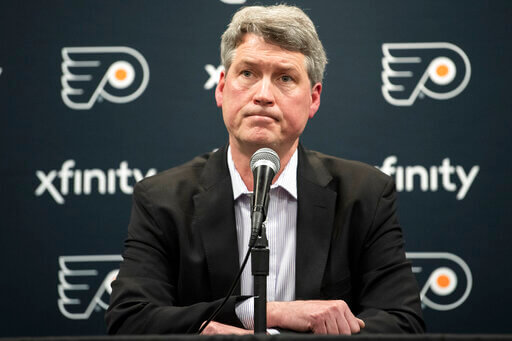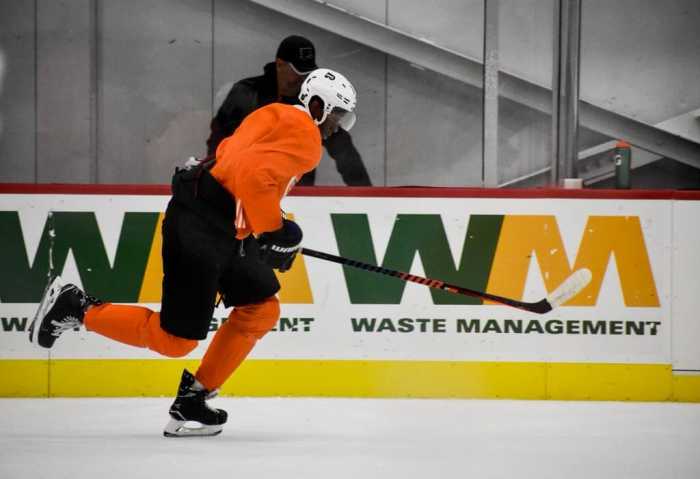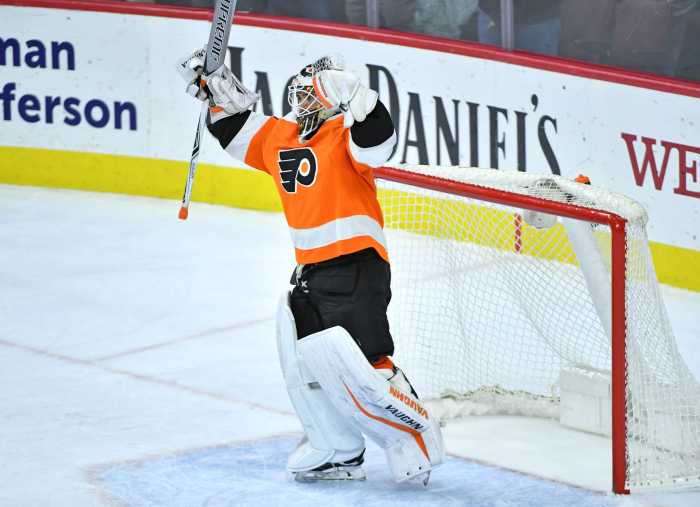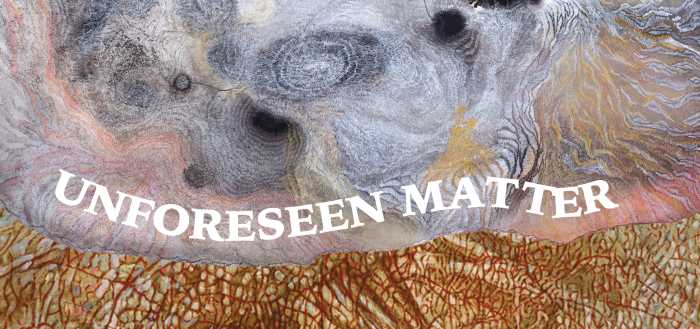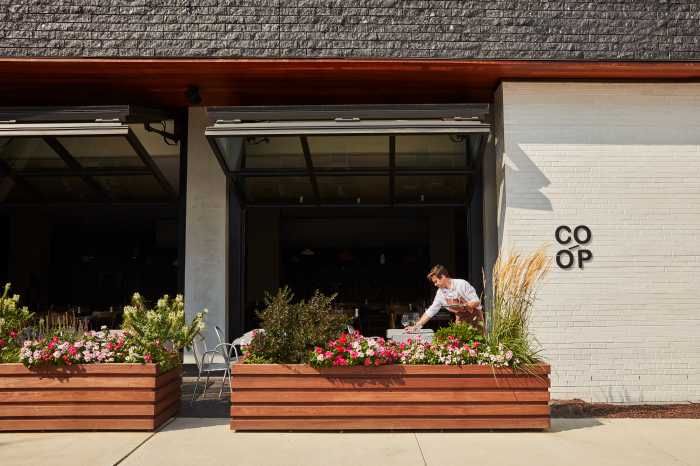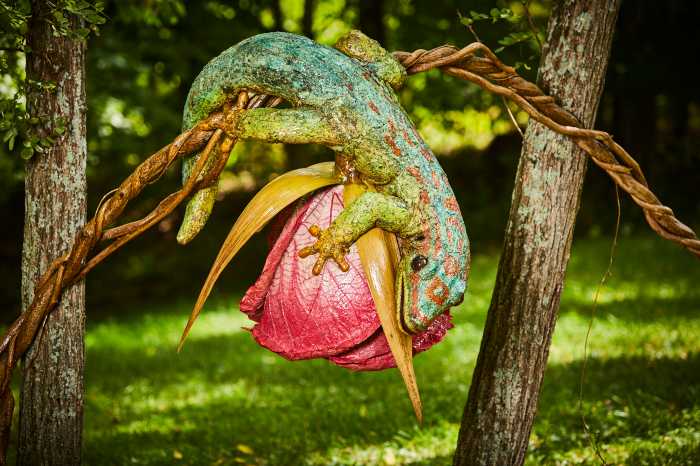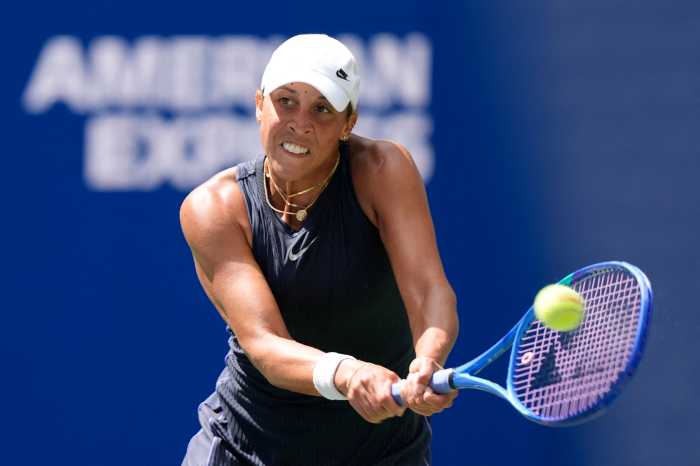As a two-part series, I review the Philadelphia Flyers players on a grade scale. Here is part two, the defensemen and goaltenders.
Defense
Ivan Provorov (C)
You better believe this is as high as the defensive grades get. Ivan Provorov and Shayne Gostisbehere finished in the top ten of team scoring, but that doesn’t enunciate defensive metrics. Sure, Provorov scores goals. How was he, and the rest of the Philadelphia Flyers’ defense, in preventing them?
Through five seasons, Provorov has yet to miss a single game. He’s still the Flyers ironman. He’s an asset with the right partnership, which is the glaring issue. Chuck Fletcher must make a top-right defenseman the main priority. It will alleviate a lot of pressure from Provorov.
He’s on the ice, averaging 25 minutes. While he can score goals to help Philadelphia on the scoreboard, he’s also exposing his puck possession weaknesses. In 2020-2021, Provorov forced five takeaways while turning the puck over 56 times.
Provorov is a two-way defenseman who has sloppy tendencies in the defensive zone. A defensive defenseman next to him will bring this franchise far from their performance this season.
Shayne Gostisbehere (C)
The Philadelphia Flyers chanced Shayne Gostisbehere on waivers. Had he played the same amount of games as Ivan Provorov, Gostisbehere could have outperformed his point total and matched his defensive production.
In 2019-2020, Gostisbehere played one more game than he did in 2020-2021. The Flyers had him on the trading block before Alain Vigneault presented a clean slate during training camp. Gostisbehere did improve, but not enough to warrant a protection slot at the NHL Expansion Draft.
Comparing the two blue-line aces, Gostisbehere and Provorov expose the same defensive issues. The defensive makeup needs possession players with better passing vision. Against division rivals or playoff quality teams, opposing forwards will continue to pounce on loose pucks in the slot. The inclusion of Cam York could help the left side entering 2021-2022.
Philadelphia’s defensive offerings won’t appeal to the Seattle Kraken; expect Gostisbehere will return to the lineup with Provorov and York.
Travis Sanheim (C-)
Against the schedule forced by the Mass Mutual Eastern Division, Travis Sanheim seemingly had a pitiful season. His plus-minus experienced a career-worst, and his overall production was hardly better than his rookie season. On the surface, it’s easy to criticize.
Sanheim experienced separation anxiety from his 2019-2020 partner, Philippe Myers. Though he transitioned with multiple comrades to his right side, Sanheim wasn’t nearly as bad as his numbers seemed. The big caveat to his performance was his physicality. Sanheim plays like another two-way defender on the left side who was without stability on the right. Some of the criticism Sanheim faces belong on the lineup shifting from Alain Vigneault and the inactive 2020 offseason from Chuck Fletcher.
The worst was yet to come. Sanheim was on the penalty kill with Justin Braun. Anyone who participated with the Philadelphia Flyers penalty-kill during 2020-2021 played with their tails between their legs. At times, Sanheim acted more like a turnstile than a barrier.
During even-strength scenarios, Sanheim was the best Flyers defenseman on the ice. What could have been if he had any stability throughout the season?
Philippe Myers (D+)
Philippe Myers was inconsistent this season in a few different ways. A fractured rib suffered against the Buffalo Sabres caused him to miss games. Then, after he returned, he was benched off-and-on by Alain Vigneault in favor of Robert Hagg or Erik Gustafsson. Thankfully, Myers returned to his rightful role, banishing Gustafsson.
Lingering injuries and inconsistent play made it especially hard for Myers to gain the trust of Vigneault down the stretch. Proving himself, Myers was the physical spark the Philadelphia Flyers defense missed. Vigneault’s approach with Myers forced him to tighten defensively. In doing so, Myers was on pace to block more shots and deliver more hits than he did in 2019-2020. Again, personnel inconsistencies adversely affected the Flyers’ defense.
From the beginning of April through the end of the regular season, Myers finished with a plus-four rating. It is incredible how badly March destroyed a lot of the defensive statistics for Philadelphia.
That March haul was a bad anomaly, so the Flyers’ defense can only move up from there.
Justin Braun (D)
In my opinion, Justin Braun could be one of the most polarizing defensemen on the Philadelphia Flyers roster. He isn’t a top-pair defenseman, but Chuck Fletcher put himself in that hole by extending him once Matt Niskanen retired. To this day, it seems like an allergic reaction. What made it worse was signing Braun to a multi-year extension. A one-year addition, similar to the money Brian Elliott received, would have made the most sense.
Here is the due credit for Braun: he and Ivan Provorov were the only defensemen to not finish with a minus rating.
Heading into next season, Fletcher and Vigneault need to prioritize a “what have you done for me lately” mantra. From April to the end of the season, Braun finished with a minus-five rating. His full-season statistics seem a little better than they are because of February (and absence from a few shellackings.)
His role as a third-pair defenseman in 2019-2020 worked for the Flyers. If Fletcher lands the top-pair right defenseman he needs, expect Braun to relegate back to the third-pair role.
Robert Hagg (C-)
Analyzing the depth defensemen sometimes can be infuriating because you realize just how unnecessary it was to waste $3 million on a seventh-round draft pick. Yes, that’s how much Erik Gustafsson cost and his exact worth mutually between the Philadelphia Flyers and Montreal Canadiens.
Another infuriating note is when you realize how underutilized Robert Hagg is on defense. Following 2019-2020, Hagg didn’t have any business in a seventh-defenseman role. He should have been in the lineup the entire time. Hagg and Justin Braun would have gelled so much better.
Rather than Travis Sanheim on the penalty kill, Hagg would have been the perfect fit. More times than not, he wasn’t in the lineup to get the opportunity. Only Scott Laughton and Nicolas Aube-Kubel hit more than Hagg. A little deductive reasoning tells you that Hagg is the most physical defenseman in Philadelphia.
If you’re stack ranking a six-man defense to see who blocks the most shots, Hagg is sixth on the team. Gustafsson isn’t in the top-six.
One of the harshest violations committed by the Flyers defense was a lack of physical instinct. Including Hagg makes Philadelphia more balanced defensively. The only reason to exclude him as much as he was is if there is a plan to keep him on a low profile before the NHL Expansion Draft. He would be a valuable pick for the Seattle Kraken on a defensive unit without many options exposed on a good contract.
Samuel Morin (D)
It’s unfair to be too harsh on Samuel Morin. Though it is his rookie season, he earns a low grade because we have only twenty games to assess him.
Finishing with a minus-five rating as a defenseman, Morin was a breath of fresh air because he went to battle for the Philadelphia Flyers. After battling so many injuries, he is just getting his skating legs back. 2020-2021 was a return to the NHL for Morin, similar to Nolan Patrick and Oskar Lindblom. The difference is Morin was returning from his second torn ACL.
Morin is already a Flyers fan-favorite. Those things are endearing, but he draws bad penalties like Nicolas Aube-Kubel and Carsen Twarynski. Against the New York Islanders, Morin received a game misconduct for a hit on Casey Cizikas. The Islanders did score a powerplay goal, then win in a shootout. Alain Vigneault restricted Morin’s minutes the next game against the Boston Bruins, resulting in a Philadelphia victory.
The whole “Matt Martin” idea with Morin didn’t work, however. Especially not at Lake Tahoe.

Don’t forget you can get exclusive Flyers merch over at FOCO!
Goaltenders
Brian Elliott (B)
He dipped to a career-low in save percentage but finished with a 15-9-2 record. As a backup, who took on the starting duties at 35-years-old, you can’t complain. Chuck Fletcher and Brian Elliott didn’t agree to a one-year extension at $1.5mil for a starting role. Ever the professional, Elliott flexed his leadership and work ethic, exceeding expectations.
Elliott will be an unrestricted free agent for the 2021-2022 season. He’s a compelling case for a franchise in need of a backup goaltender. Again, Fletcher should keep Elliott’s number in his contact list. There are options available, but not for this bargain. Chris Driedger and Jonas Johansson will cost more than Elliott to back up or rotate with Carter Hart.
Along with a career-low saving percentage comes a career-worst goal against average. Without question, Elliott is in the late stages of his career. He’s expressed an interest to play next season, however.
Is it wise for Carter Hart to return to form without a veteran like Elliott as reassurance? That’s another game of mental chess the Philadelphia Flyers brass need to finesse.
Carter Hart (F)
Descending from a top-ten NHL goaltender to the worst starting goaltender in a season means you earn the lowest grade. Carter Hart’s quick statistics of an 87.7% save percentage and a 3.67 goal against average to finish 2020-2021 are worse than any of Brian Elliott’s seasons through fourteen years in the NHL.
Hart has had a wild career. In his rookie season, the Philadelphia Flyers went through an all-time amount of goaltenders in a year. Then, the Flyers commit to him, he breaks out, and a pandemic happens. Now, the mental anxiety of life during a pandemic is taking him out of his game. That’s a lot for any goaltender to handle, especially one who hasn’t experienced any consistency on a pro-level.
His rebound could need more than just a typical off-season inclusion. A new goaltending coach could be what Chuck Fletcher wants. Ian Clark is available with a brilliant track record and an assortment of Stanley Cup champions on his coaching resume. A convenient hire to the coaching staff could turn a few goaltender prospects into a quality backup for Hart, relieving cap space to add a playmaker.
Imagine the momentum swing if Philadelphia develops a young goaltending duo from their system. It’s no longer a retooling phase.
Alex Lyon (C-)
With a historically bad defense, Alex Lyon jumped into the mix for five games. He held his own in the NHL’s toughest division, maintaining a 1-3-1 record. Lyon improved his goal against average in each performance leading to his only win of the season. A few games were required for Lyon to catch the NHL pace again before he looked like an able goaltender. Defeating the Pittsburgh Penguins and forcing the Washington Capitals into overtime, was Lyon finding his major-league groove?
Again, Lyon exceeded expectations after dissecting beyond his record. He surpassed a 95% save percentage in his last two outings (facing 38.5 shots per game.)
He isn’t a natural selection for the NHL roster by the Seattle Kraken, but if they use a pick to deepen their goaltending core, Lyon has value.
Photo Credit: Alex McIntyre


